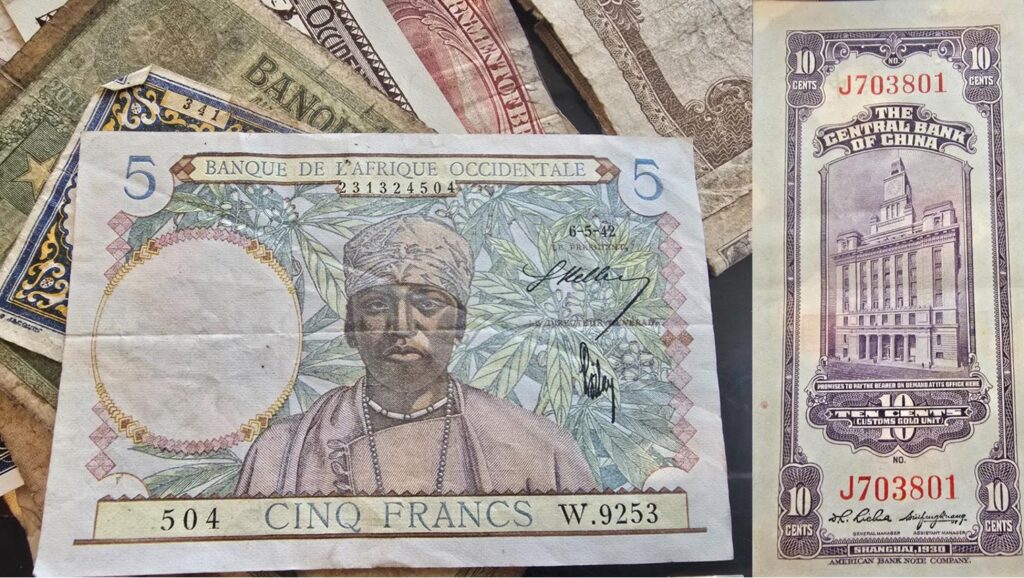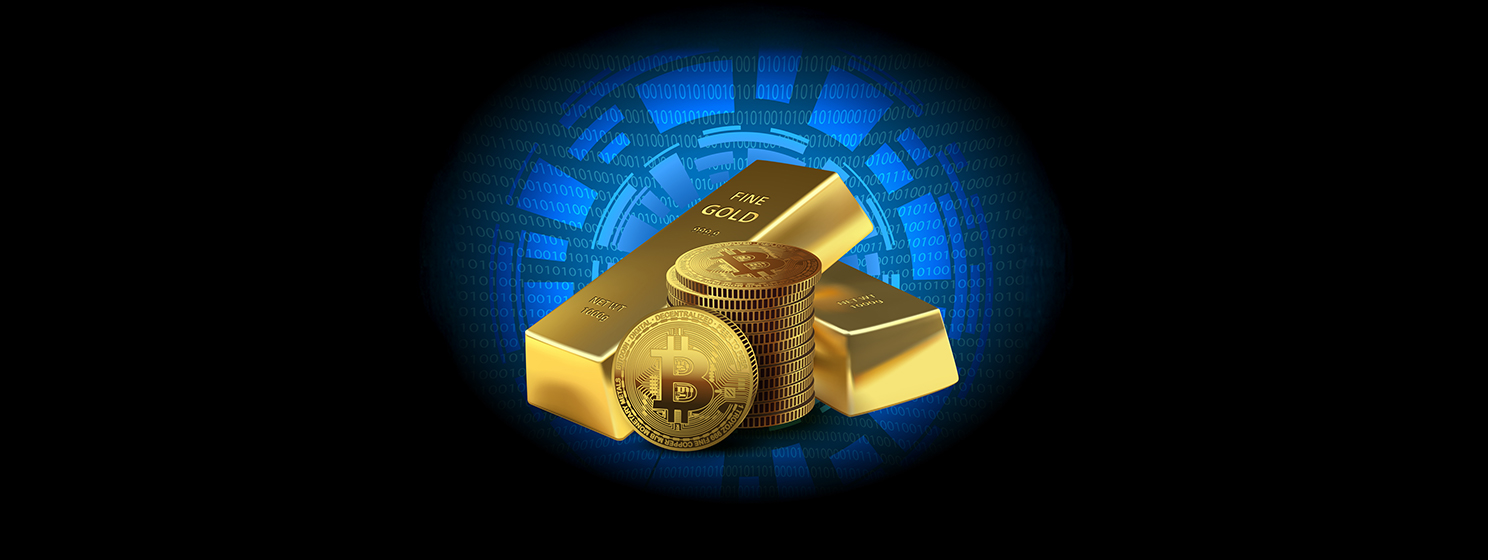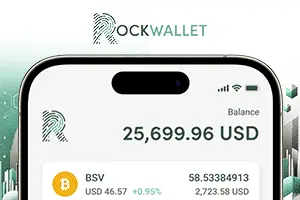|
Getting your Trinity Audio player ready...
|
A few days ago, my father pulled out his currency collection from deep storage. It contained paper money that my grandparents and he had gathered from across the world during their service in the Second World War and Cold War. Some were beautifully printed bills from Vichy France, Japan-occupied Korea, Nationalist China, the pre–World War II Soviet Union, and even “Liberation Money.” Many bore the names of countries that no longer exist, and some of these currencies had once been backed by gold.
Now, they are nothing more than collectors’ items, artistic remnants of economic systems that have since vanished but at one point been a matter of survival in often very hostile and challenging economic conditions.

Examining these bills and reading about the nations behind them reminded me how quickly monetary reality can change. Governments fall. Borders shift. Currencies disappear. What once passed as legal tender becomes history, and trust in money, often taken for granted, fades just as fast.
As the global financial system moves through another turbulent phase, gold is rising again, not just in price but in relevance. It is being reconsidered as a safe haven and a foundation for the next monetary era.
In 2023, central banks purchased over 1,000 tons of gold, the highest level in over fifty years. This steady and deliberate move suggests growing mistrust in fiat currencies. Gold is no longer viewed merely as a legacy asset; it is being positioned as insurance against a future where fiat fails to hold its value.
Fiat money relies on trust—in governments, in central banks, and in the idea that fiscal discipline will prevail. History offers little reason to believe this trust is durable. The German Papiermark collapsed in the 1920s. The Soviet ruble vanished after the fall of the USSR. Zimbabwe, Venezuela, Argentina, and others have watched their currencies lose value or disappear entirely. Even today, inflation continues to chip away at the purchasing power of the lira, peso, and others.
Peter Schiff, a long-time advocate for gold, has said, “All fiat currencies eventually return to their intrinsic value—zero.” That may sound extreme, but it is a recurring lesson from history. It is one reason why individuals, institutions, and governments are again turning to gold. But storing it isn’t enough. In the digital age, people need a way to use gold as real money.
This is where tokenization comes in. Using blockchain technology, physical gold, vaulted and audited, can be represented as digital tokens. The BSV blockchain offers a platform built for this purpose. With its large block size, low fees, and high throughput, BSV supports the fast and low-cost transfer of value worldwide. On BSV, gold can be divided into small units, sent instantly, and used in smart contracts while remaining tied to physical metal.
This isn’t hypothetical. Companies are already working on issuing tokenized gold on BSV. These tokens would be backed by real, redeemable assets stored in secure facilities, while the BSV blockchain provides a transparent and immutable ledger. Users can transact in gold without needing to move the metal itself. Payments, salaries, and savings can all be managed in an asset that has preserved purchasing power for thousands of years.
James Rickards, author of Currency Wars, has long warned of a looming reset in the international monetary system.
“We’re in the early stages of a currency war, and gold will be the ultimate winner,” he said.
He imagines a future where gold is once again central to global trade, this time in a digitized form. Tokenized gold on BSV matches that vision; it is a modern form of sound money, usable on a global scale.
BSV’s infrastructure makes this possible. Its efficiency and low transaction costs allow for the real-world use of tokenized
metals. Unlike other blockchains plagued by congestion or high fees, BSV was designed to scale. It supports microtransactions, embedded data, and complex applications, all on a single chain.
Tokenizing gold and silver on BSV offers more than protection against inflation. It creates a global payment network anchored in physical value. This isn’t about going back to the gold standard of the past. It’s about moving forward with a system where money is real, trusted, and usable in digital form.
As currencies continue to weaken and trust in financial institutions erodes, the need for alternatives grows stronger. Blockchain-backed gold offers a way to restore confidence. It provides individuals and businesses with a stable, transparent, and internationally accepted medium of exchange.
The currency notes in my father’s collection were once symbols of economic strength. Now, they are relics. Their stories remind us that even the most trusted systems can crumble. With tokenized gold on BSV, we have a chance to build more resilient and useful money that holds its value, travels easily, and works for everyone, everywhere.
This may be one of the most important financial transformations of our time, and BSV is already making it real.
Watch: What is blockchain-powered gold and can you buy coffee with it?

 12-06-2025
12-06-2025 





